What is it like to live in a converted shipping container?
- Published
Families spoke to the BBC about living in containers
It is a warm summer's day in Hanwell, west London, and Abdel Rrahim and his family are feeling the heat more than most.
That is because Abdel, his wife, and their seven-month-old son live in a metal shipping container, converted by the council. "It's very hot," he says. "It's like fire."
They are among 34 families living in their estate of metal boxes on the former site of a 1970s garage block.
A new report by the Children's Commissioner for England has found these containers are an increasingly popular way for some councils to provide emergency housing.
At a cost of about £35,000 each, it found the containers - sized 20ft by 8ft (6m by 2.4m) - were a cheaper option than paying for bed and breakfasts.
But it also found many of these homes are "often not properly designed with children in mind".
It is something, Abdel says, that he and his family know only too well.
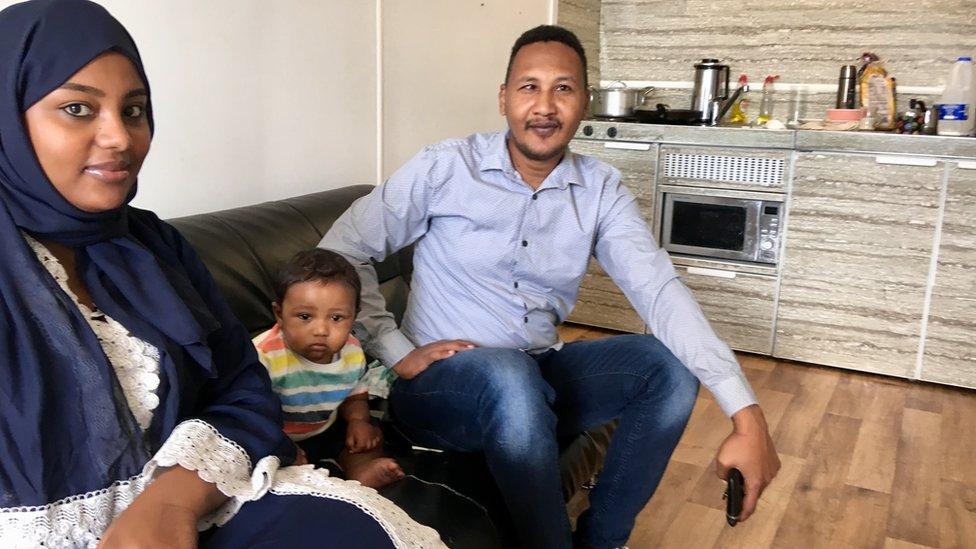
Abdel, Nasibah and their young son Youssef at home
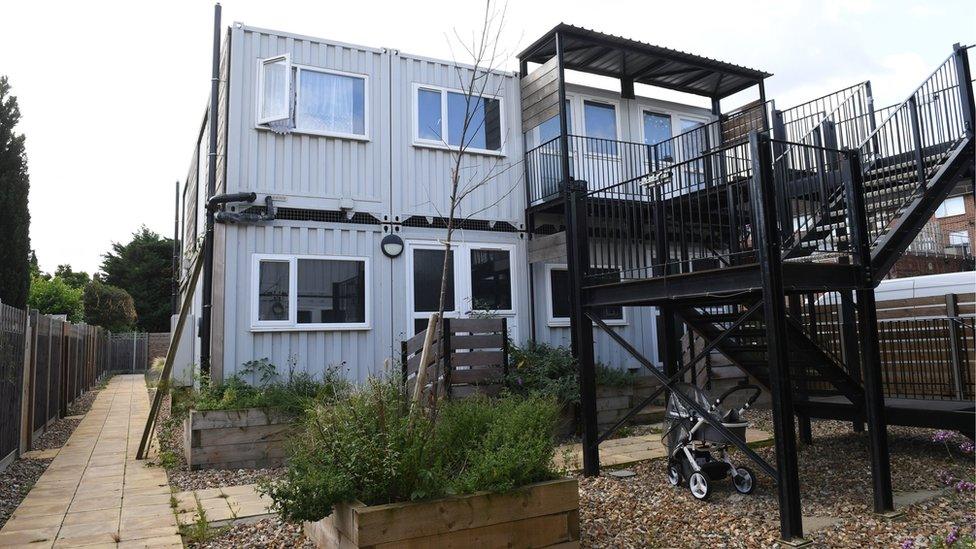
"My son suffers from the heat and can't sleep," he says. "He has a rash on his face - eczema.
"I told the doctor I am living in something like a caravan. He said it could be the heat that is the problem and that air conditioning would help.
"We have the windows open all the time."
Abdel, 35, works as a chef at a local restaurant but has recently struggled to make ends meet.
He says there is "nothing we like about living here" but adds that it is better than the shared hostel they lived in for two months previously.
While the report says the fact these homes are self-contained is "an advantage", it warned they can also become "overcrowded".
For families of up to five, the homes consist of three containers bolted together - each the width of a car and as long as a Transit van.
Single mother Lulu Abu Baker, 38, lives in her two bedroom home with her four children, aged between two and 12. They have lived there for nine months.
In the living area - which includes a small kitchen - there is no furniture except for a small table and a chair. The majority of the room is space for her children to play.
Her eldest son has autism and learning difficulties and she says it is hard for him to use the estate's playground.
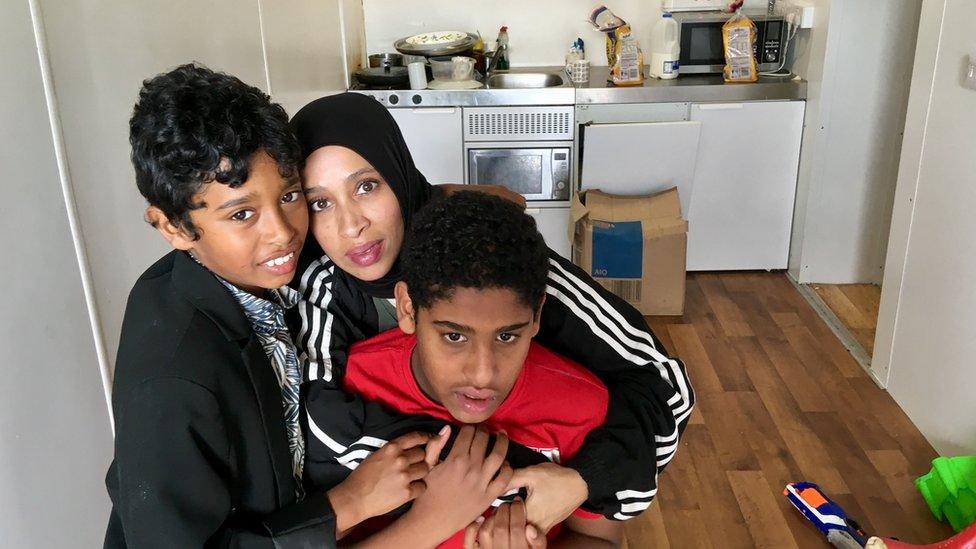
Lulu Abu Baker shares the two-bedroom container with her four children
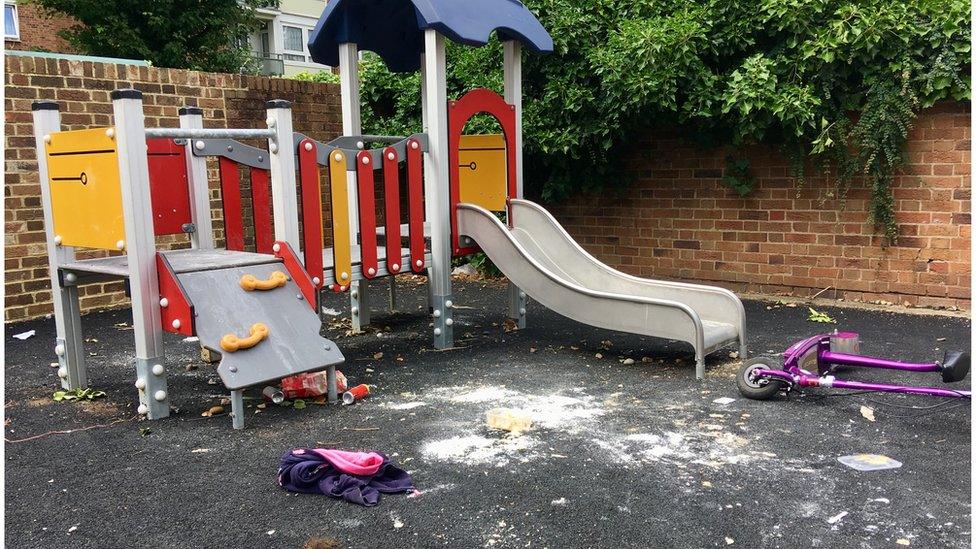
The estate's playground
"We're stressed and seeing my son - he doesn't deserve that. All we want is a home so my son can get to play and he can be free," she says.
"I keep saying we need an extra room for him and space for sensory toys, which need to be fitted on the wall and ground so he cannot lift them, so he can play and be calm."
Lulu sleeps in a room with her youngest son, while the other two boys, aged 10 and 12, share a room with their sister, 11.
But the summer heat can cause the children problems sleeping.
She says they often wake-up "agitated" in the night, fighting or banging on the walls, with the noise travelling down the sides of the container and waking up the neighbours below.
Meal times are also difficult, she adds.
In the kitchenette there is one hob, a fridge, a freezer and a microwave. With no oven, "a quick egg or tuna sandwich" is a common evening meal.
Ealing Council runs three sites in the borough, with a total of 108 container homes. It plans to build a fourth in a bid to help home the more than 9,000 people on its waiting list for a council home.
The council says most of its container homes do have ovens and that it does offer extra fans to residents in the summer months, and extra heaters in the winter.

Ms Abu Baker says she struggles to prepare warm meals for her four children in the container's kitchen
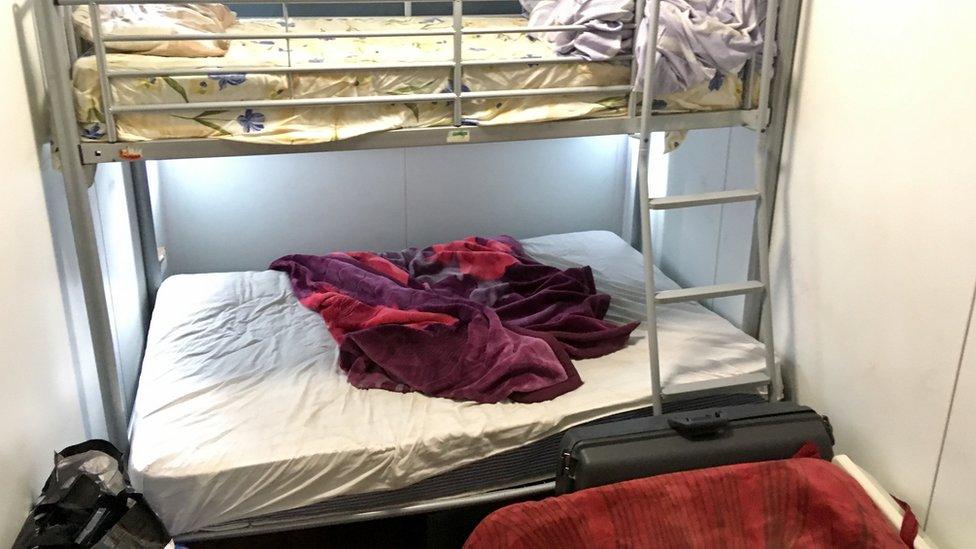
The Abu Baker children's room
The gated community is well-landscaped, with planters dotted around the tidy grounds and play area.
"It looks quite appealing from the outside," says mother Fatima, 29, who lived on the estate with her two children, aged two and five, for about six months after her marriage had broken down.
Despite the setting, however, she agrees with the commissioner's report, which found for some residents "antisocial behaviour" had been a problem.
For other residents here, the containers have made life easier.
University graduate Marian has been living in one with her daughter Mia, now aged two, for more than a year.
Before then, they had lived in shared accommodation with "complete strangers" following the break-up of her relationship - and, for her, the self-contained units are an upgrade.
"I quite enjoy living here to be honest with you," she tells Radio 1 Newsbeat.
"Maybe I have a different outlook from the other tenants who are living here because I've been somewhere worse.
"If you're essentially homeless you'll take anything because you don't want to be on the street but at the same time we have to factor in the fact of people having children, people having children with disabilities."
Fatima, a former cardiac nurse, says living there was better than being homeless, but moved out in July, after finding a two bedroom house in Northolt.
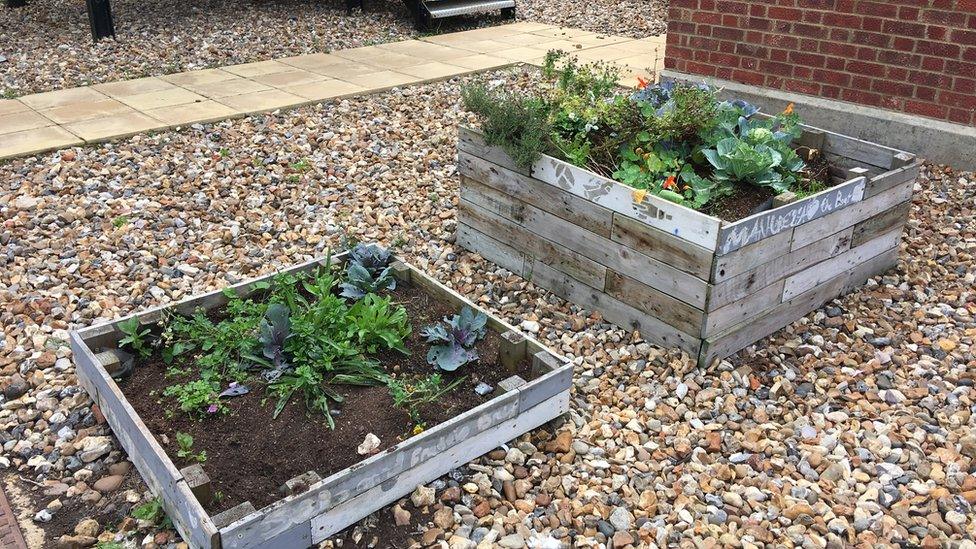
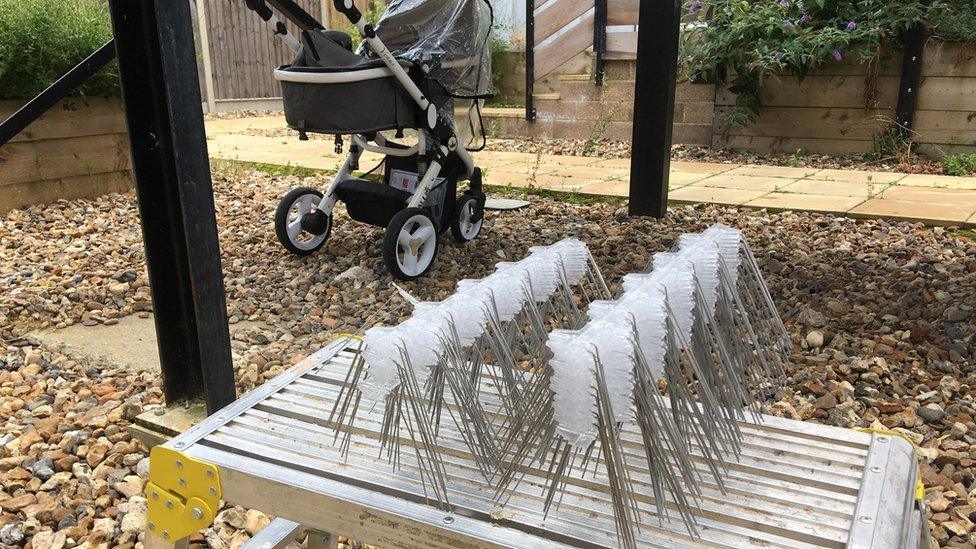
Workmen were fitting anti-pigeon spikes to the containers' ledges after complaints over droppings
She says she was threatened by other residents, that the management office was always empty and that she regularly witnessed groups of teenagers smoking cannabis in the shared washroom area.
"They've changed the policy now, so you have to have a key."
"But you don't feel safe," she adds. "There is a lot of drunk and vulnerable men who live here that need sheltered accommodation - somewhere they can be helped and managed."
In response, Ealing Council said the containers offer a "stable, private environment for vulnerable homeless families who have nowhere else to go".
It added the containers offer families "far better, much more private standard of accommodation than bed and breakfasts", which often come with shared kitchens and bathrooms.
"We discuss every tenant's family circumstances and needs with them in great detail before they are allocated temporary housing," a spokesman said.
"We follow national guidelines in this process and would never deliberately place a family into a home which is not suitable for their needs."
- Published21 August 2019

- Published3 April 2019
